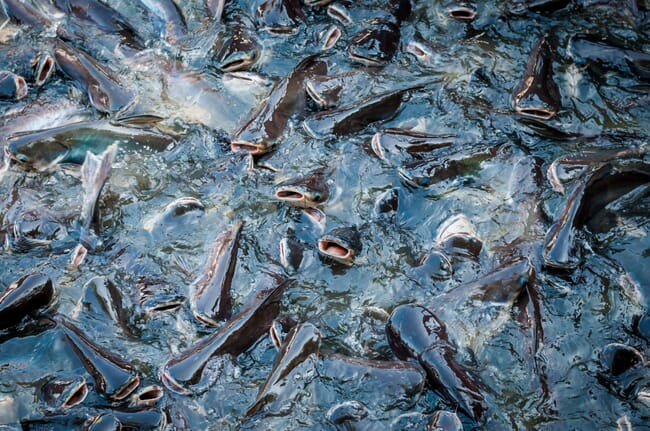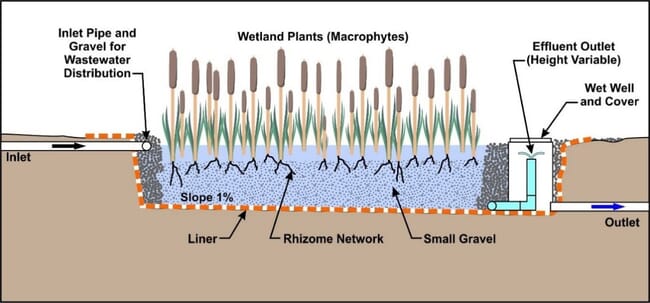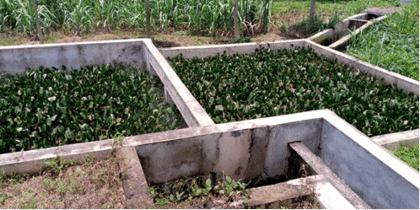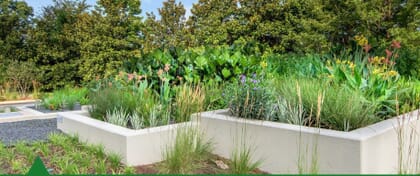Aquaculture can play a key role in African food security
The food insecurity situation in the world has been increasing. Fish is a relatively inexpensive source of protein in developing nations. National and international agencies are aiding the effort to increase fish production.
In Africa commercial aquaculture is relatively new and under-developed. However, fish production is an essential part of many communities. Fish farming is a major driver of local livelihoods and household sustenance. Men and women have developed traditional ways of producing, preserving, and processing fish, improving output and income. But these practices have resulted in only marginal production increases compared to exponential population growth.

Aquaculture is a viable solution to increasing food security in Africa. The African contribution to world aquaculture production is still small (2.7 percent), [1] but is currently increasing – with large-scale investments in Egypt, Nigeria, Uganda and Ghana. [2] [3]
Nigeria, the most populous African country, and the second-largest producer of fish, must produce over a million tonnes a year to meet demand. Some of the rising challenges facing the industry are unsustainable water use and lack of technological advances in water quality management. Most farmers rely on the uncontrolled use of surface water and discharge their farms’ effluent back into the nearby environment.
RAS technology in Nigeria
Few farmers have shifted from the traditional methods of pond fish culture to follow the worldwide move towards more intensive fish production and sustainable practices. Recirculating aquaculture system (RAS) technology reuses and processes water using filtration technologies. RAS can concentrate fish waste products, with effective waste treatment, disposal and recycling technology.[5] Organic fish waste – both settled and suspended solids – are removed through mechanical filtration. Dissolved particles are removed by foam fractionation. Nitrogenous waste products, toxic ammonia (NH3) and nitrite (NO2), are converted by biofiltration to nitrate (NO3). RAS also reduces the production area, in comparison to other forms of land-based aquaculture.
African catfish (Clarias gariepinus) is one of the most efficient warm water fish species to be produced in RAS, with production reaching over 200-350 kg/m3. [6] African aquaculture companies should follow this technological advantage to improve fish production and supply.
The Patec group [7], located in Nigeria, has plans to establish the largest catfish RAS farm in Africa, producing over 2,500 tonnes per annum. The company’s plans include hatcheries, nurseries, grow-out, and integrated processing facilities. By 2024, it aims to process up to 5,000 tonnes of live catfish, produced from its own facility and by other growers, initially for the local market. It will then seek to expand into other parts of the country and West Africa, to facilitate export sales. Further study into Patec's project will be conducted to analyse its efficiency and determine its capabilities. The success of this facility could be influential in creating a turnaround in Nigeria aquaculture.
Production constraints
Many African fish farmers still rely on flow-through systems, where water is pumped from rivers and streams to the ponds, and then discharged back into the same water sources. Several fish-producing communities in Nigeria use run-off water in this fashion. Most of these farms are situated along river plains, creeks, and reservoirs. Some important limiting factors include unstable water supplies, seasonal changes, floods, and cross-contamination among farms.
African catfish (Clarias gariepinus) are the preferred cultured species – as these fish are adaptable, resistant to diseases, and have strong customer demand. However, their production in Nigeria has been negatively affected by the unregulated use of antibiotics, inbreeding and environmental stresses. An example is in Kwara state, where farmers no longer favour producing Clarias, due to poor growth and disease. Some farmers complain that in recent years the mortality rate has increased, and the growth rate decreased. One possible explanation suggests that local African catfish immunity has been compromised by poor genetics and water mismanagement.
Is RAS the best solution?
RAS can provide many benefits: better water management, higher stocking densities, limited land area, healthier disease-resistant fish, and a quality food product. Although there are a few farms that utilise RAS for catfish fingerlings and food fish, the high initial setup and operational costs of contemporary high-tech RAS have priced out many small and medium-scale fish farmers. Moreover, erratic power supply and the high cost of operating power generators make the operation of RAS difficult in Nigeria.
However, it is possible to use the principles of recirculating aquaculture without the same expense. Farmers can use sedimentation tanks and ecological filtration to process and reuse pond water. Chinese farmers are using this “ecotechnology” to improve production in their systems.[8]
Types of ecotechnologies
1. Constructed wetland systems (CWS)
One possible ecotechnology option is a constructed wetland system (CWS), which uses sand layers, aquatic plants, and microbial assemblages to treat wastewater from farms. It was recommended that a horizontal subsurface flow (SSF) be used to remove pollutants by integrating a sequential system: the first area with planted macrophytes in a typical gravel bed (neutral pH) to remove suspended solids, organic matter and nitrogen; and a second area containing a basin filled with steel slag and limestone without plants, as a polishing step for maximum phosphorus removal.[9] CWS can simulate a RAS by providing mechanical and biological filtration in this integrated unit. CWS are cost-effective, simple to operate, adaptable to climate and load variation. They also reduce the use of electrical pumps and allow for the efficient management of outdoor culture systems.

© Tilley et al, 2014
3. Reciprocating wetlands (ReCip)
Another ecotechnology option is offered by reciprocating wetland (ReCip) systems. These use the principle found in natural tidal wetlands and relate to patented improvements in the design and operation of subsurface flow (SSF) constructed wetlands, such that contiguous cells are filled and drained on a recurrent basis. This recurrent fill and drain technique, with cycling every 1 to 12 hours, turns the entire wetland system into a fixed-film biological reactor. This improves the efficiency of constructed wetlands, thereby promoting high microbial diversity and a broad range of biotic and abiotic reactions.
In an experiment carried out to treat wastewater from a pilot-scale intensive tilapia farm, removal rates for BOD, total nitrogen and total phosphorus averaged 99, 95 and 84 percent respectively. Also, it has been reported that the ReCip enhances hydraulic conductivity, biofiltration and pH stability.[11] The wetland strength can be improved with the selection of specific aquatic/terrestrial plant assemblages to augment treatment (phytoremediation).

© Abdulmalik Oladipupo
The area requirements for SSF wetlands are 10 times that required for reciprocating wetlands. Furthermore, to be effective SSF wetlands must be shallow (25 cm). Reciprocating wetlands require pumping but can be 2 metres deep. As the reciprocating technology is aerobic, it is possible to raise traditional vegetable and flower crops for an added source of income. [12]
By simulating the tidal principal, these systems can achieve efficient energy use, a very compact footprint and high-quality recirculated water. Scientists at the Tennessee Valley Authority (TVA), in collaboration with the US Environmental Protection Agency, developed a ReCip capable of treating up to 300,000 gallons of domestic wastewater per day (80,000 litres) per day).[13]
Figure 5. Reciprocating Wetland (source: US Sustainable water,
patented by Tennessee Valley Authority)
Nitrification in SSF and ReCip wetlands
Partial nitrification can be achieved through vertical and intermittently loaded SSF and reciprocating wetland systems. Complete and efficient nitrification in the wetland cannot be achieved and depends on loading rate and high retention time, which is impracticable for this application. Nitrification, which is important to fish wastewater treatment, is needed to meet reuse requirement in fish ponds. The energy demand through aeration in this treatment is high, which calls for a hybrid wetland system.[14] The integration of mechanical power input via pumping of air to improve nitrification activities is important. This engineering input provides an aerobic environment for bacterial development and to oxidise organic carbon.
Energy requirement for nitrification in engineered wetlands (a tidal and pulsed flow)
Energy requirements do not depend strictly on technology.[15]
Rather, site condition, design decisions, and total nitrogen removal requirement substantially affect design energy requirements. Different improvised systems include aerated (AW)[16], and tidal flow (TF) [17]
wetlands. The dissolved oxygen demand for nitrification in these systems is lower. The integration of this ecological process helps to limit electrical power needed to supply, and to improve the efficiency of pumps and blowers. In Africa, where the temperature is above 25oC, aeration is encouraged to improve oxygen of the inflow and wetland. Plant photosynthesis and partial mechanical air supply from a blower would increase the oxygen supply and breakdown of organic compounds.

© US Sustainable Water
Conclusion
Water management (quantity and quality) has a crucial effect on fish production. It is important to consider RAS for improved fish health, growth, survival, and sustainability. Intensive fish production in closed RAS facilities is getting more attention due to global seafood demand, and African catfish production will be an important sector. Protein demand remains high in Africa due to exponential population growth, and fish are the best and most affordable protein available. With the predominance of small to medium-size farms, the current pond systems will not be sufficient to meet future fish requirements.
As an alternative to RAS, African catfish producers and investors need to consider new technology options for improving fish output with reduced capital/operation expenditures. Ecotechnology used in outdoor farming can improve production, sustainability, and profitability. It is also an affordable and efficient waste treatment system. The principles of constructed wetland systems and reciprocating wetlands could be the key to the future of African aquaculture.




